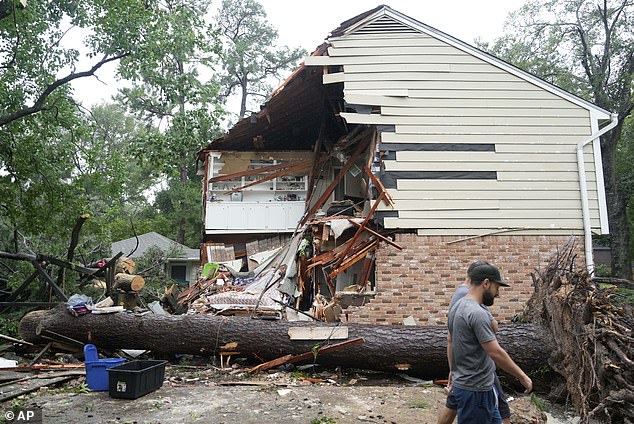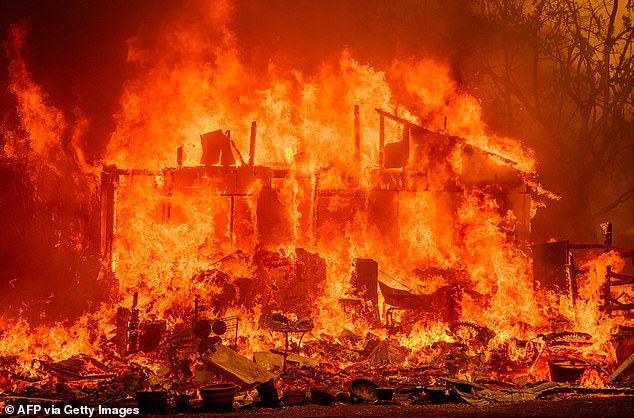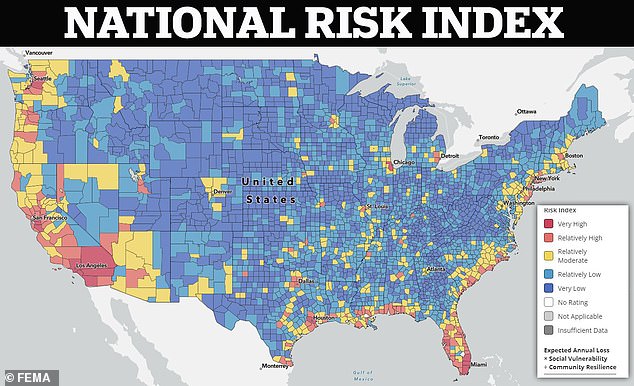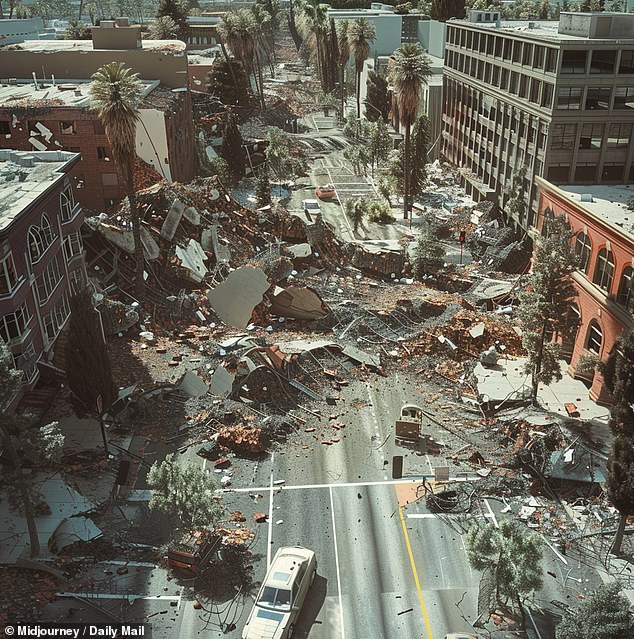Scientists reveal the US cities where your home is most likely to be destroyed by a natural disaster
The country is being ravaged by natural disasters: wildfires rage, hurricanes destroy homes in the Midwest, and states struggle with high temperatures and drought.
Researchers from Rutgers University have identified the places in the US most at risk from natural disasters.
The team found that people living on the West Coast are more likely to lose their homes and other possessions than people living in the Midwest.
California is home to seven of the nation’s top 10 natural disaster risk zones, with the other three being Houston, Texas; Huntsville, Alabama; and Oklahoma City, Oklahoma.
California is home to seven of the nation’s top 10 natural disaster risk zones, with the other three being Houston, Texas; Huntsville, Alabama; and Oklahoma City, Oklahoma.

The superstorm brought howling winds and torrential rain to the southern state on Monday, killing eight people and leaving more than 2.7 million without power.
The US is facing an increase in hurricanes, wildfires, floods and droughts in areas from Virginia to California.
Interestingly, the research found that the riskiest areas are in the wealthiest neighborhoods, compared to areas in less affluent communities.
“The wealthiest people often choose to live in places that are dangerous because of natural disasters,” said Michael Greenberg, the study’s lead author and a geographer.
The disaster struck Houston on Tuesday as Hurricane Beryl tore through the area, leaving nearly 1.7 million people without power and sending temperatures soaring above 90 degrees Fahrenheit.
In Las Vegas too, temperatures will rise to 46 degrees Celsius for the sixth day in a row.
In the national analysis, Greenberg and co-author Dona Schneider looked at statistics from the National Risk Index identifying the communities most at risk of certain events.
The duo also looked at hazards such as air pollution and toxic waste sites, and at social services such as food and health care.
The study found that while poorer communities have fewer assets and greater social vulnerability, such as expertise and services to protect them from risk, people in high-income areas face higher economic losses because they have more assets to lose.
Residents of wealthier neighborhoods also often live in more densely populated areas with higher air pollution from hazardous waste, heavy traffic, and Superfund landfills.
This concerns locations that are contaminated with hazardous substances, such as production facilities, processing plants, landfills and mining sites.
People living in areas like Los Angeles — one of the most at-risk areas in the country — are exposed to 60 percent more air pollution from vehicle emissions than the state average, the Union of Concerned Scientists.
Southern California also experiences about 10,000 earthquakes a year of all types and sizes. The Los Angeles area will experience an earthquake with a magnitude of 6.7 or greater within the next 30 years, according to a report by the US Geological Survey (USGS).
Last week, California was hit by a wildfire in Sacramento, which destroyed forests and homes, leaving a trail of destruction.
The states with the most relatively low risk areas were Montana, Nebraska, Virginia, West Virginia and Maine, the National Risk Index found.

Flames destroyed a home during the Thompson Fire in Oroville, California on July 2, 2024

The research found that while poorer communities have fewer assets and greater social vulnerability, such as expertise and services to protect them from risk, people in high-income areas face higher economic losses because they have more assets to lose.

Scientists predict the next ‘Big One’ will hit California within 30 years, originating from the San Andreas Fault Line. The photo shows what Los Angeles might look like if a magnitude 6 earthquake were to strike
According to Greenberg, the goal of the study was to demonstrate that while “low-income areas face many hazards, even the most affluent suburbanites cannot escape the dangers associated with living near industrial and waste-processing facilities.”
For those who want to know the risks associated with their specific location, they can visit the EPA EJScreen This will include demographic, economic and air quality information, as well as the locations of potential industrial and waste management hazards in the area.
“You can put a circle around your house and find all kinds of information,” Greenberg said. “Why not educate yourself?”
